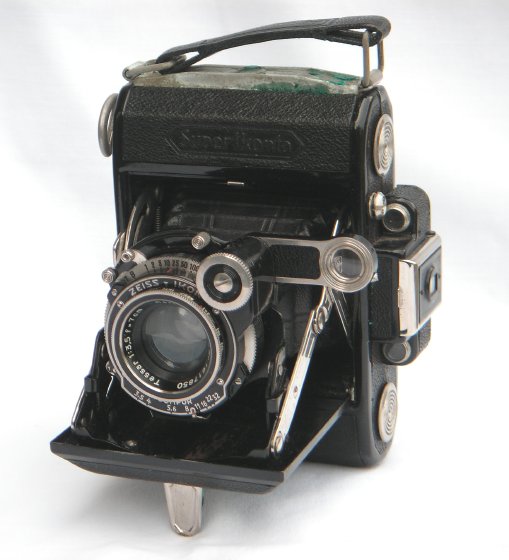My father bought
this camera around 1937, a Zeiss Super Ikonta using roll-film.
It's
pretty advanced for the time: it has a good rangefinder (the bit
sticking out just above the lens: turning the thumbwheel shows two
overlaid images which you have to line up to get focus), a wide range
of speeds and one of the best pre-war lenses, the Zeiss Tessar f/3.5.
The weakest point is the viewfinder (closed in the photo) which opens
up to make two lenses which give a reasonable idea of the field of view
(though as always with these it's not entirely accurate).
The
negative size is unusual. The film is 1210 size - probably the most
popular size for amateurs in the 1930s, though there were some smaller
sizes (even apart from 35mm which was very new). Most cameras took 8
shots on a roll, giving a negative size of 3.25 x 2.25 inches (83 x
57mm): the Ikonta takes 16 on 120, giving a negative of 2.75 x
one-and-seven-eighths inches (57 x 43mm). This is a very convenient
size - 16 is a useful number on a roll, and the size is small enough to
be convenient and large enough to give noticeably better quality than
35mm. |
|

